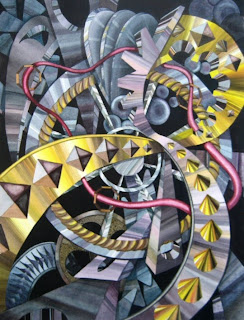 Art as Experience
Art as ExperienceBy John Dewey (1934)
Have you ever looked at a painting and marveled at the masterful technique used to create it – and, that was all you took away from it? I have. I’ve seen mind-boggling technically precise work that looked more like a machine produced it than a human. Every tiny detail is perfect and the entire work is nothing but tiny details. It’s apparent that the artist worshipped technique above all else. Yes, we do appreciate “fine” works of art like this, but they’re not “great.”
Yesterday’s post featured Dewey’s comment that art is fine, it is said, when form is perfected; but it is great because of the intrinsic scope and weight of the subject matter dealt with, even though the manner of dealing with it is less than fine.
We can extend this discussion to include the relative importance of the medium employed by an artist. What is it’s role? According to Dewey:
The medium is a mediator. It is a go-between of artist and perceiver. The artist has the power to seize upon a special kind of material and convert it into an authentic medium of expression.
The medium is a mediator. It is a go-between of artist and perceiver. The artist has the power to seize upon a special kind of material and convert it into an authentic medium of expression.
Moreover,
Sensitivity to a medium as a medium is the very heart of all artistic creation and esthetic perception. Such sensitiveness does not lug in extraneous material. When, for example, paintings are looked at as illustrations of historical scenes, of literature, of familiar scenes, they are not perceived in terms of their media. Or, when they are looked at simply with reference to the technique employed in making them what they are, they are not esthetically perceived. For here, too, means are separated from ends. Analysis of the former becomes a substitute for enjoyment of the latter.
Sensitivity to a medium as a medium is the very heart of all artistic creation and esthetic perception. Such sensitiveness does not lug in extraneous material. When, for example, paintings are looked at as illustrations of historical scenes, of literature, of familiar scenes, they are not perceived in terms of their media. Or, when they are looked at simply with reference to the technique employed in making them what they are, they are not esthetically perceived. For here, too, means are separated from ends. Analysis of the former becomes a substitute for enjoyment of the latter.
So, I would conclude that the weight of the subject matter trumps technique and medium.
What do you think?


















